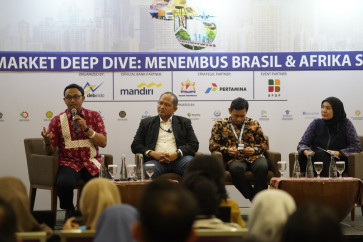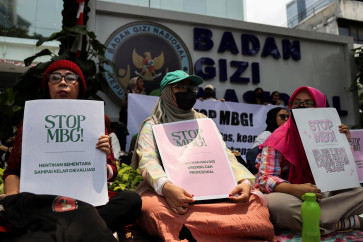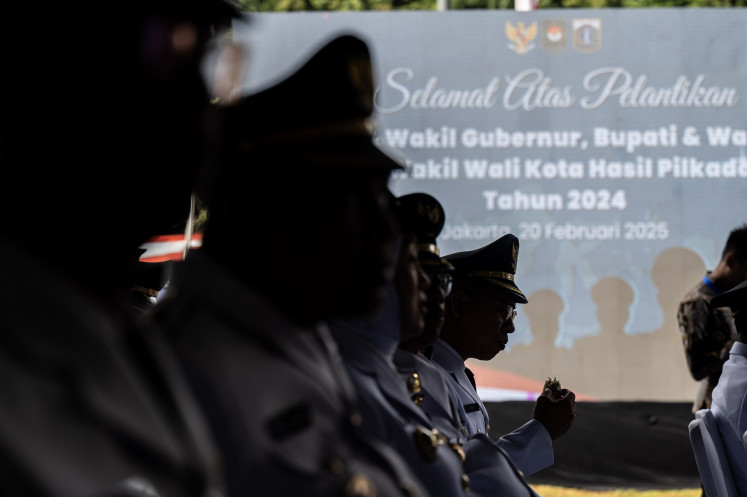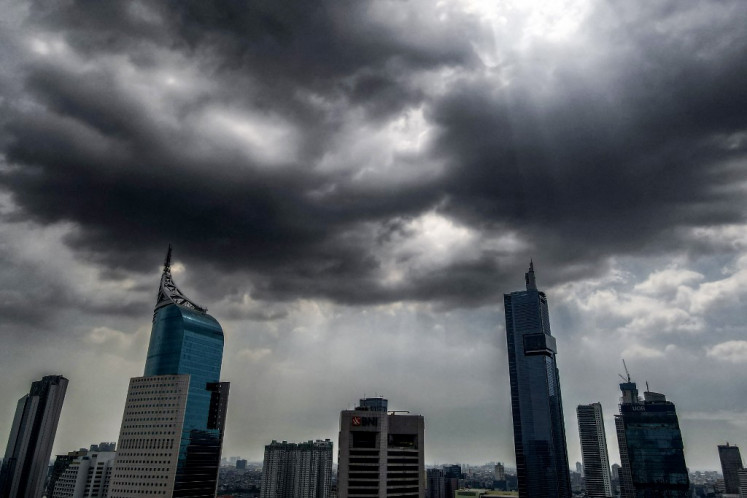Popular Reads
Top Results
Can't find what you're looking for?
View all search resultsPopular Reads
Top Results
Can't find what you're looking for?
View all search resultsInequality overshadows Indonesia's economic growth
Indonesia’s economic growth of 5
Change text size
Gift Premium Articles
to Anyone
I
ndonesia’s economic growth of 5.02 percent year-on-year (yoy) in the third quarter, although the lowest rate in more than two years, would be a dream come true for many other countries. The global economy will grow by 3.2 percent this year, according to the International Monetary Fund’s forecast.
Not all Indonesians, however, can enjoy their country’s above-average growth, with 25 million still living on less than US$1 per day as of March this year, Statistics Indonesia data show. A recent report by the Asian Development Bank (ADB) revealed that 22 million Indonesians endured hunger in the period of 2016 to 2018.
Inequality in Indonesia increased from 2000 to 2016, as reflected in a rising Gini ratio, but has since dropped to a Gini reading of 0.382 as of March this year, according to SMERU Research Institute economic development researcher Ridho Al Izzati. The Gini ratio is a measure of inequality — the higher the number, the larger the gap.
“Our study shows that absolute inequality has kept increasing over the years despite a drop in relative inequality. This [Gini index drop] happened because [middle-segment] income growth has been faster than growth in other income brackets, yet absolute income growth of the rich remains higher than that of the poor, widening the income gap," said Ridho.
Indonesia’s top 1 percent still accounts for 45 percent of the country’s total household wealth, which is a high figure by international standards, the SMERU report notes.
Additionally, growth has been centered on the island of Java. The National Development Planning Agency (Bappenas) pointed out last year that 60 percent of the country’s economic activity took place in Java.
The administration of President Joko “Jokowi” Widodo plans to move Indonesia’s capital from Jakarta to the regencies of North Penajam Paser and Kutai Kartanegara in East Kalimantan to distribute growth. The President has also rolled out social welfare programs, including the Family Hope Program, the National Health Insurance and state-funded scholarships.
But a recent SMERU study shows that social assistance, while effective in addressing poverty, has had limited effect in closing the income gap. Ridho argues that the grants have been too little to make a difference in the pattern of income distribution.
“It seems like the government has yet to formulate progressive policies on the rich with measures like income and wealth taxes,” Ridho said.
Many Indonesians still engage in traditional agriculture, trapped in low-paid and relatively unproductive activities, according to a report published in October by the ADB, the International Food Policy Research Institute and the Bappenas.
“Many of them do not get enough food and their children are prone to stunting, keeping them in a vicious cycle for generations,” reads the report titled "Policies to Support Investment Requirements of Indonesia’s Food and Agriculture During 2020-2045".
Numerous studies have shown that malnutrition can hinder households or regions from escaping poverty, such as by affecting a person’s productivity, learning capability or health.
In the city of Komba, around 200 kilometers or a six-hour car drive from the scenic tourist town of Labuan Bajo, many villagers struggle to make ends meet. They live from day to day, saving nothing and eating plain rice they sometimes get from family members or neighbors, or cassava or corn grown in their dry backyards.
Meanwhile, 10 km from downtown Jambi in Sumatra lies the village of Kasang Pudak in Muaro Jambi regency. The villagers should be enjoying the highest economic growth in four years in Jambi at 4.82 yoy in the second quarter this year.
Last year, 8-year-old Amat (not his real name) moved to the village with his parents from Medan, North Sumatra. Amat’s father did everything he could to make ends meet, from working as a day laborer on construction sites to selling fruit, according to Nurdin, one of the neighbors.
Amat’s parents died and the boy weighed 9 kilograms — the normal weight for 1-year-old babies — when the Muaro Jambi regency administration declared him malnourished. Amat was sent to the Raden Mattaher regional hospital in Jambi city for intensive care.
Jambi Health Agency head Samsiran Halim said malnourished children usually also had other illnesses, such as lung tuberculosis, skin tuberculosis or cerebral palsy. “Some have congenital disorders, such as Down syndrome or respiratory problems from birth,” he added. (est)










